Once part of an ancient lakebed, the Makgadikgadi Pans form a vast collection of salt flats in Botswana rivalled only by Bolivia‘s famous Salar de Uyuni. The surreal landscape of cracked earth and shimmering white expanses feels otherworldly. Within it lies Nxai Pan, a remote gem known for desert beauty, unique wildlife, and the legendary Baines Baobab trees—some thousands of years old.
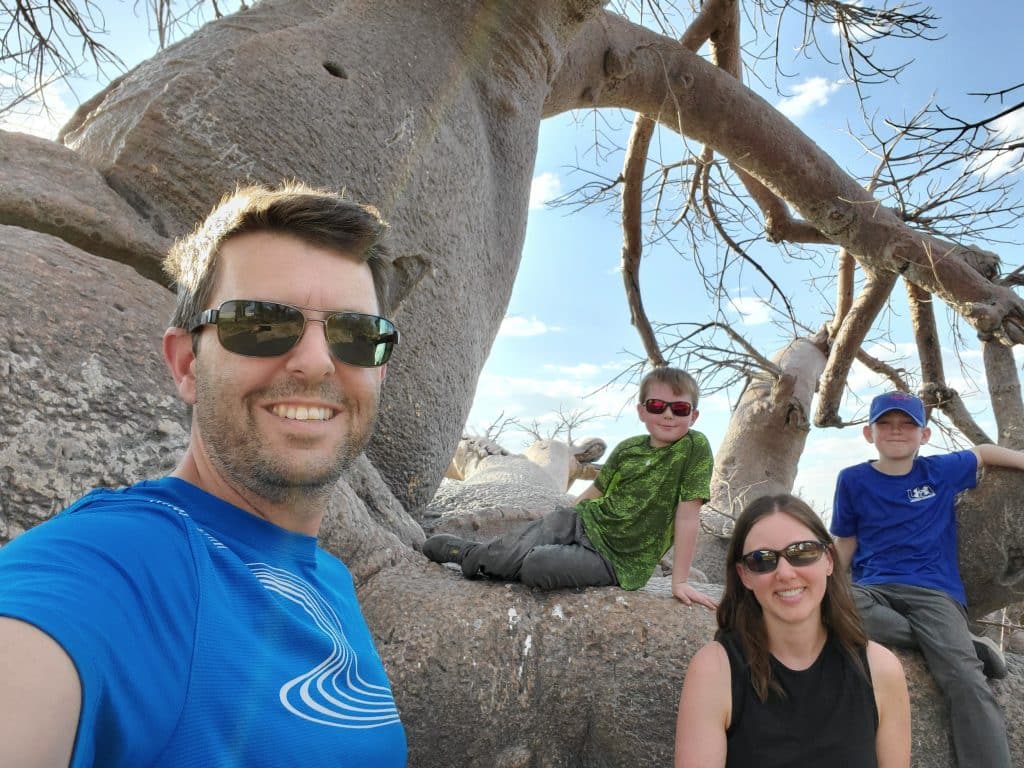
A Sea of Salt and Sky: A closer look at Botswana’s surreal salt flats.
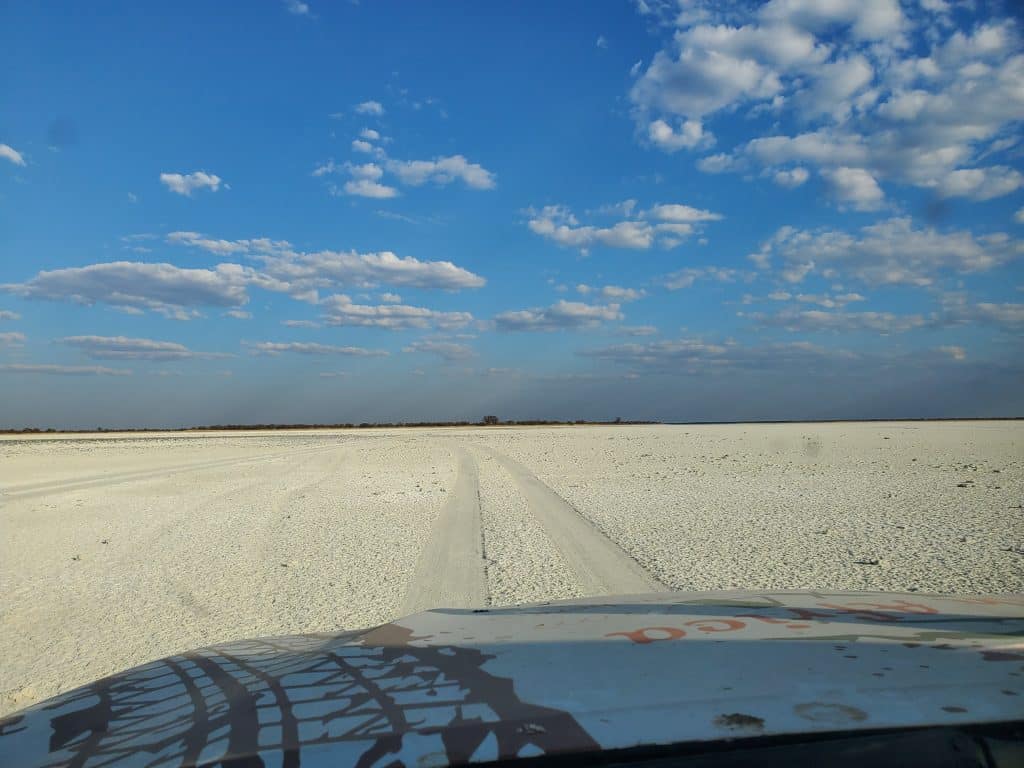
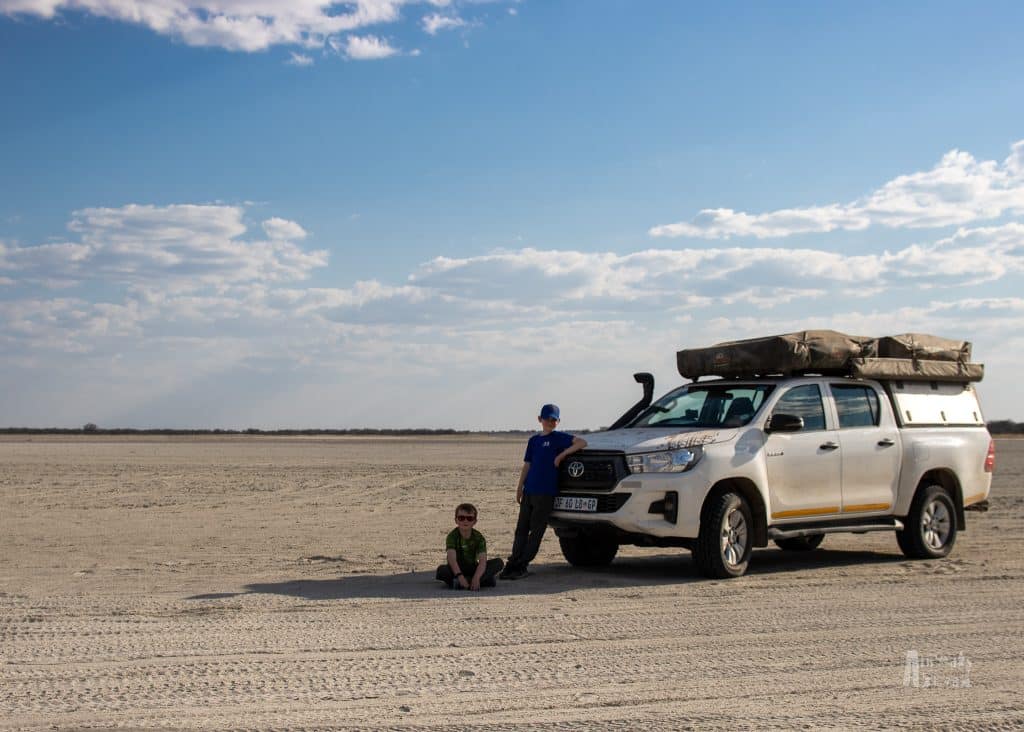
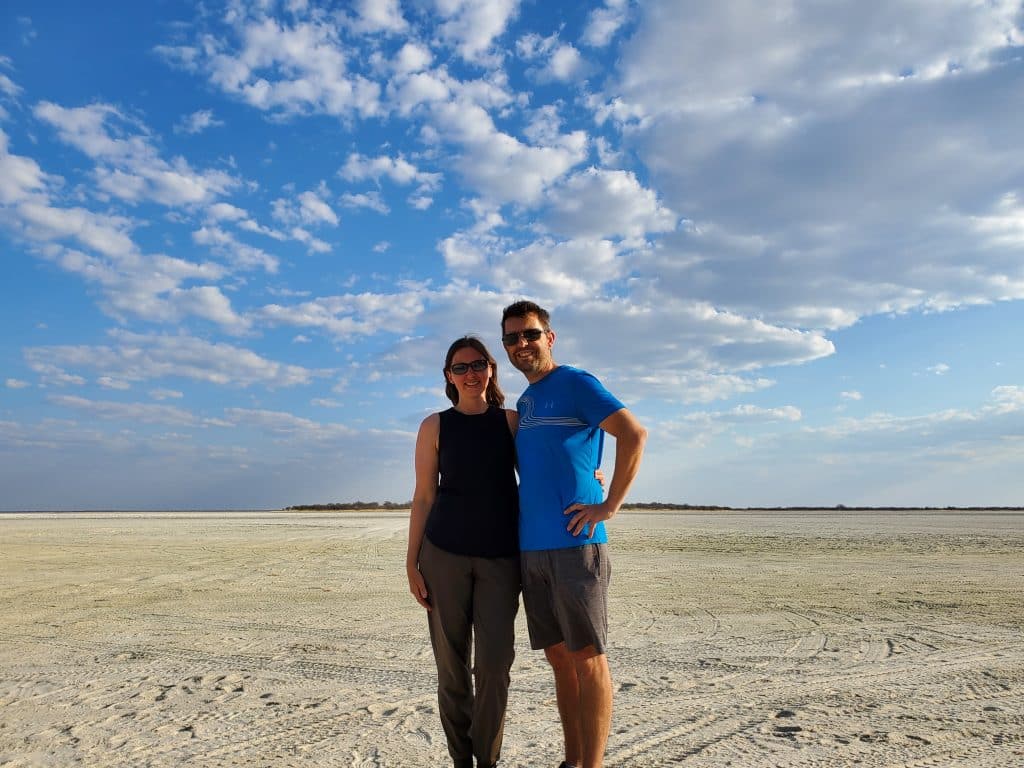
Ancient Trees in a Timeless Desert: Exploring Baines Baobabs
Baines Baobabs, named after explorer and painter Thomas Baines, are a cluster of ancient trees rising dramatically from the edge of a desolate salt pan. Their immense trunks and gnarled branches seem almost sculpted by time, standing as watchmen in a vast, open landscape. These giants—some estimated to be over 4,000 years old—command the horizon, immovable and awe-inspiring.
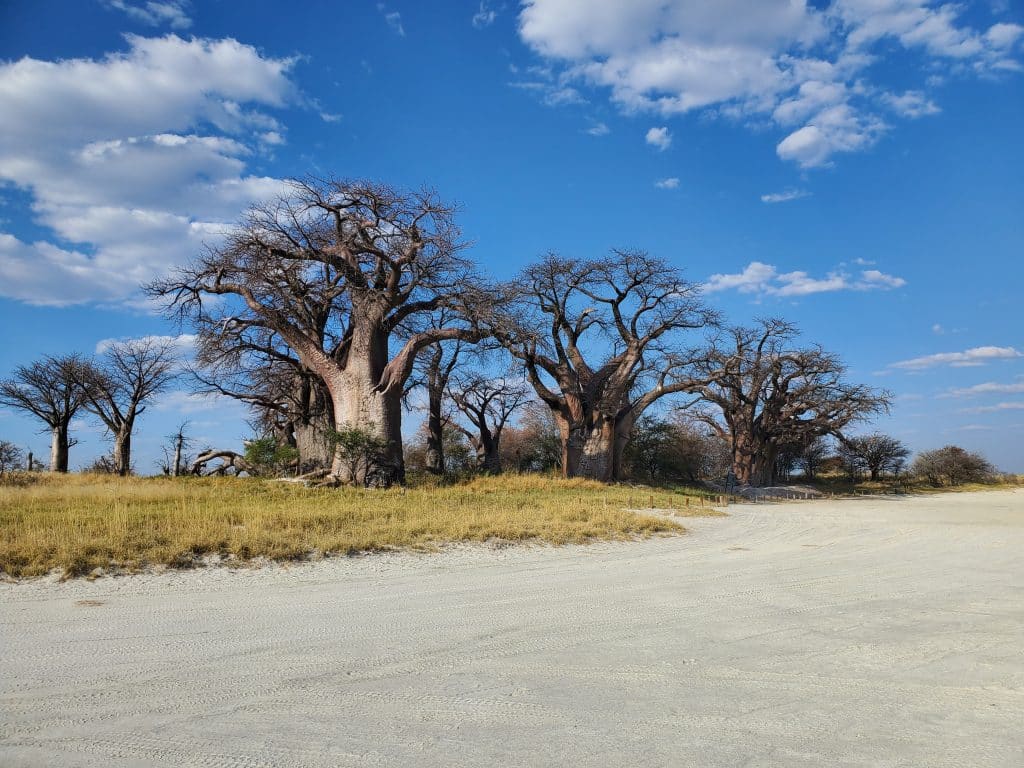
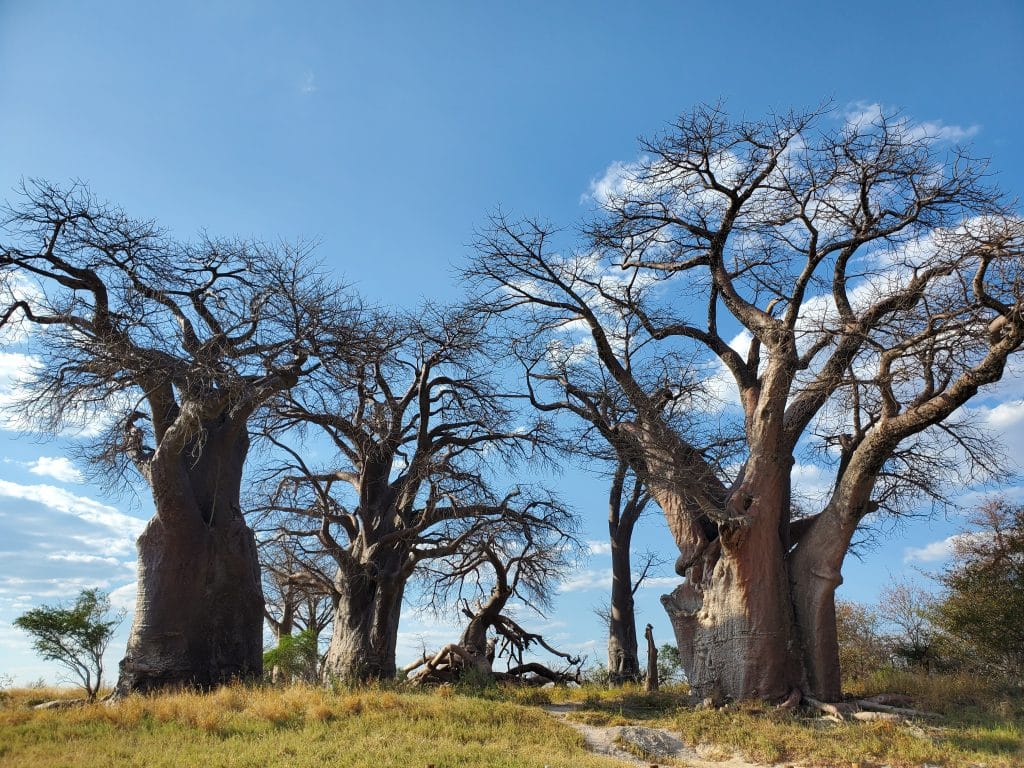
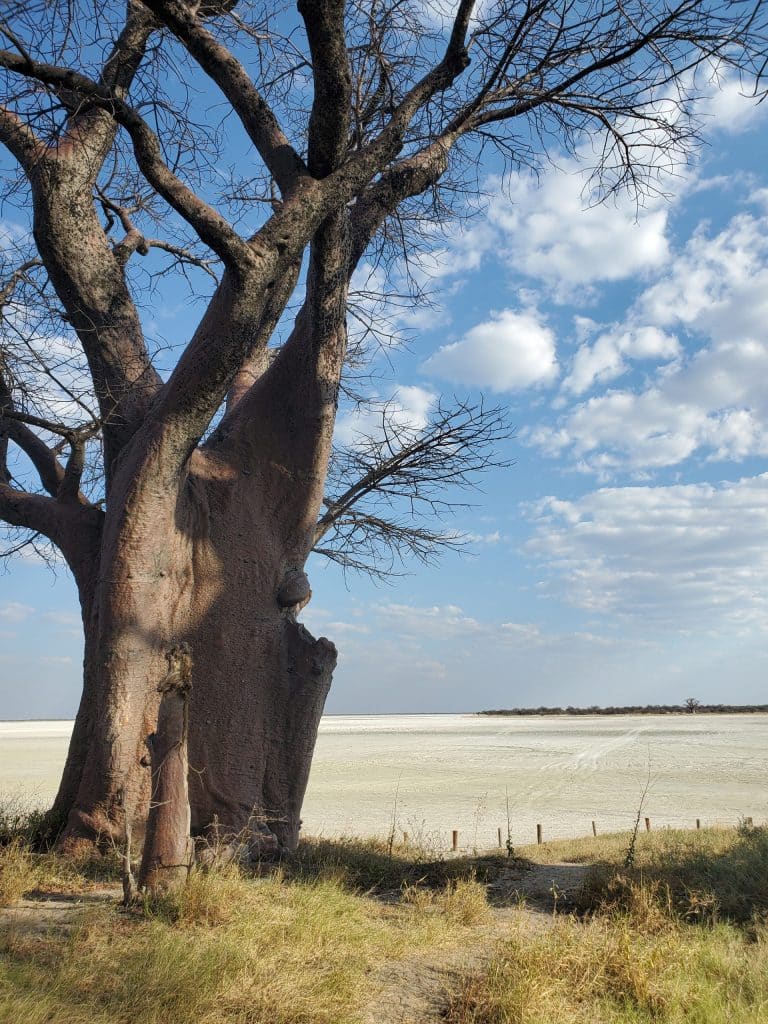

Wandering beneath them, there’s a stillness that’s hard to describe. The desert stretches out in every direction, and above, their twisted limbs reach toward the sky, shaped by the centuries they’ve endured. Rooted in salt and sand, they seem to defy both time and terrain.
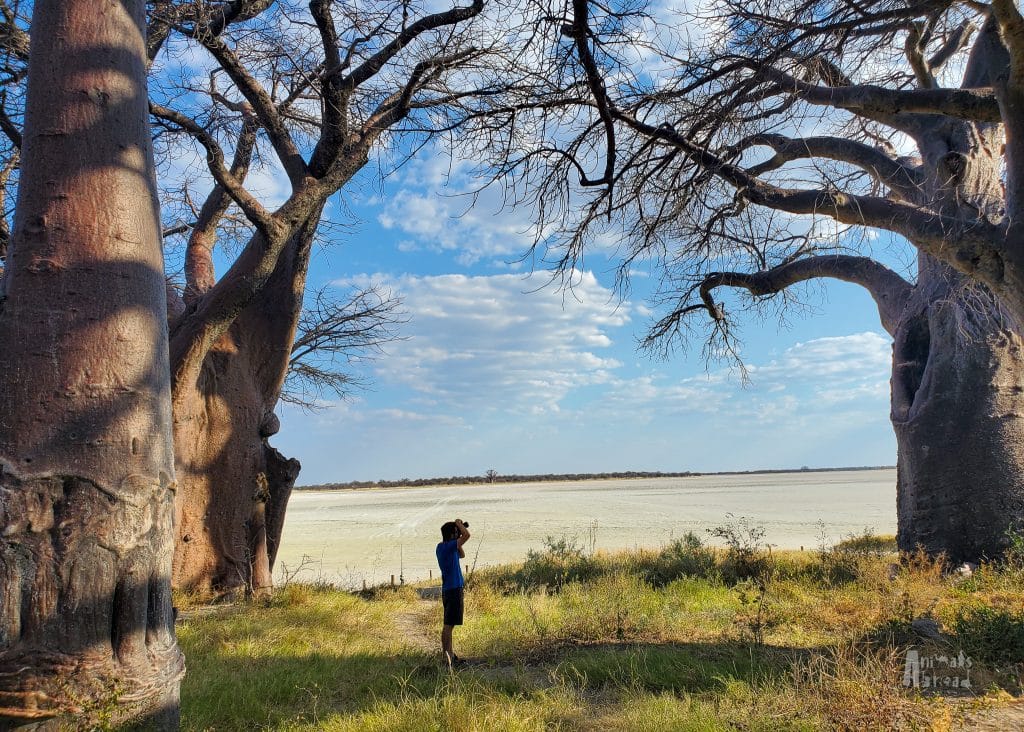
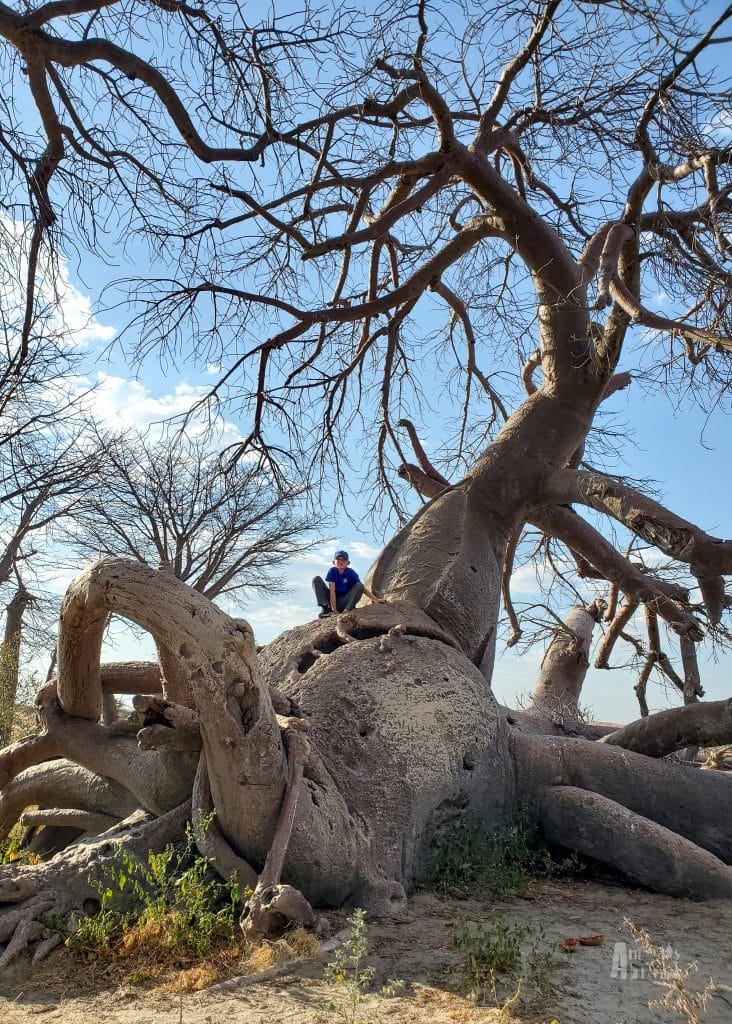
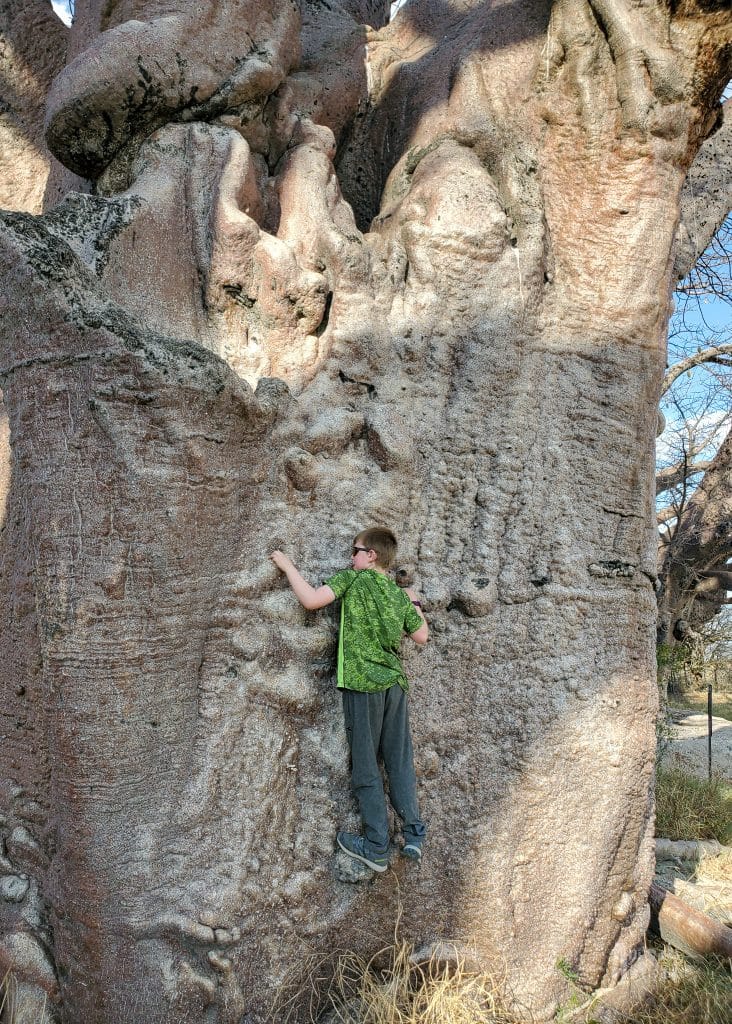
Camping Under Giants
Our campsite, nestled beside two towering baobabs with views of shimmering salt flats in the distance, was as remote as it gets. No fences. No people. Just the rustle of dry grass and the whisper of wind through branches.
Check out some of the other campgrounds we visited on our safari. Learn More: Camping Across Southern Africa: A Rundown of our Safari Campsites
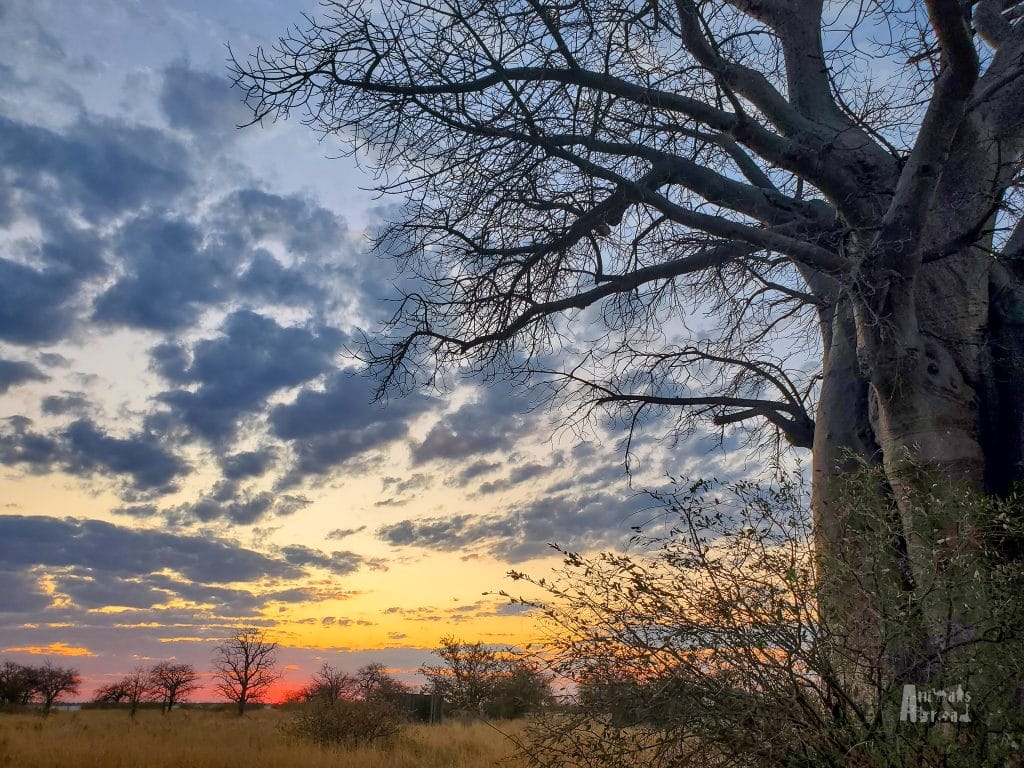
Wandering Giants: Exploring Nxai Pan South Gate
We left our secluded Baines Baobab campsite the following day and travelled through Nxai Pan National Park to the South Gate entrance. The southern region of Nxai Pan is where most wildlife action happens, with a famous waterhole and a resident pride of lions.
We didn’t see the lions, but we were far from disappointed.
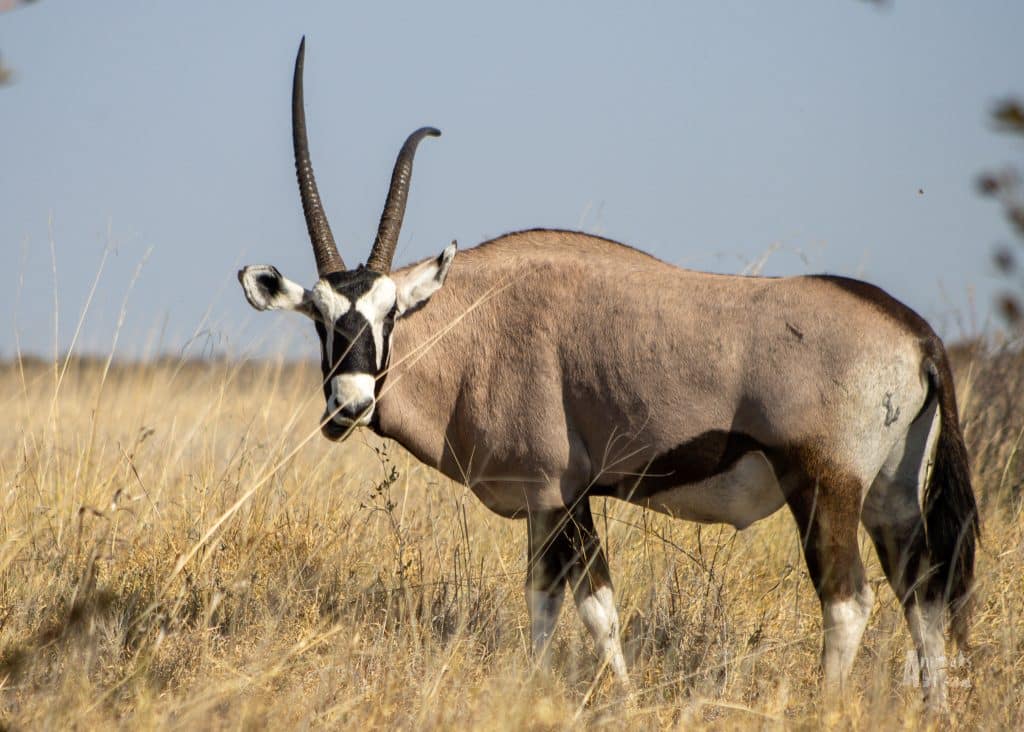
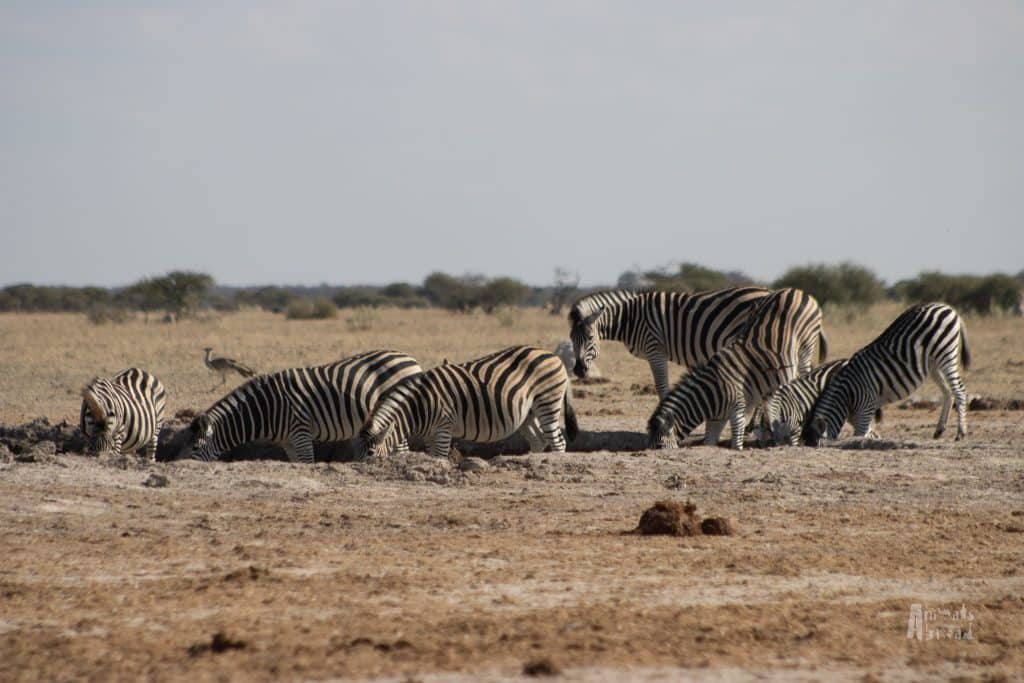
As we pulled up to our campsite, a family of elephants were leisurely grazing in the grassy area next to us. Moments later, one ambled right through our campsite, undisturbed and unhurried.
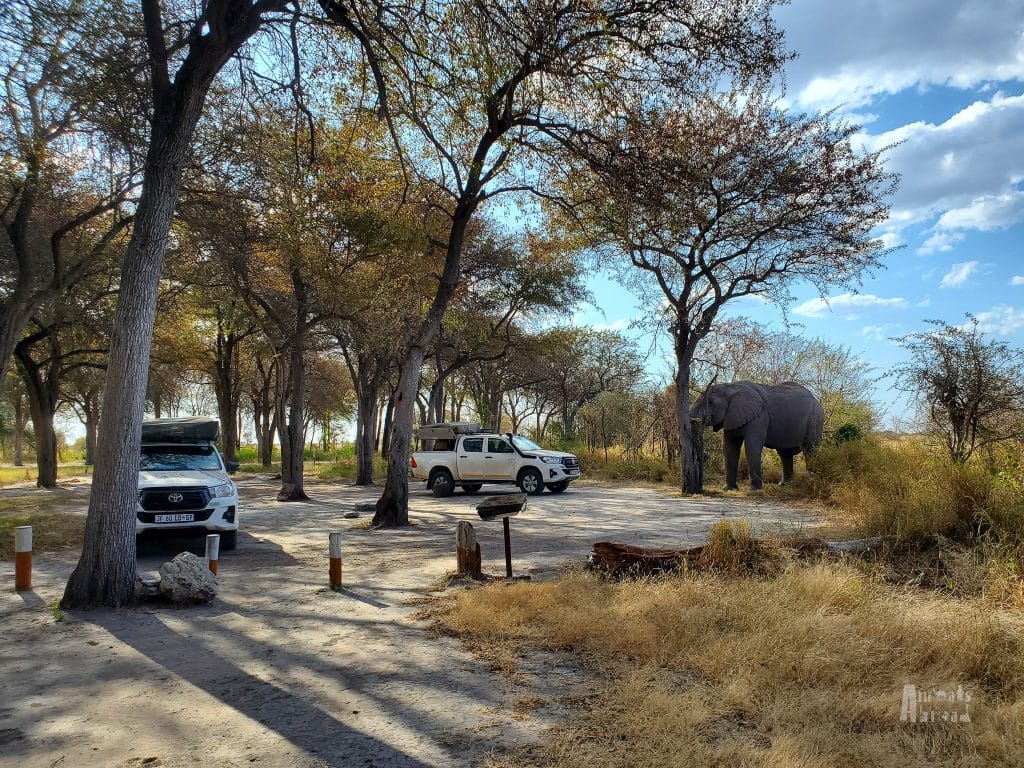
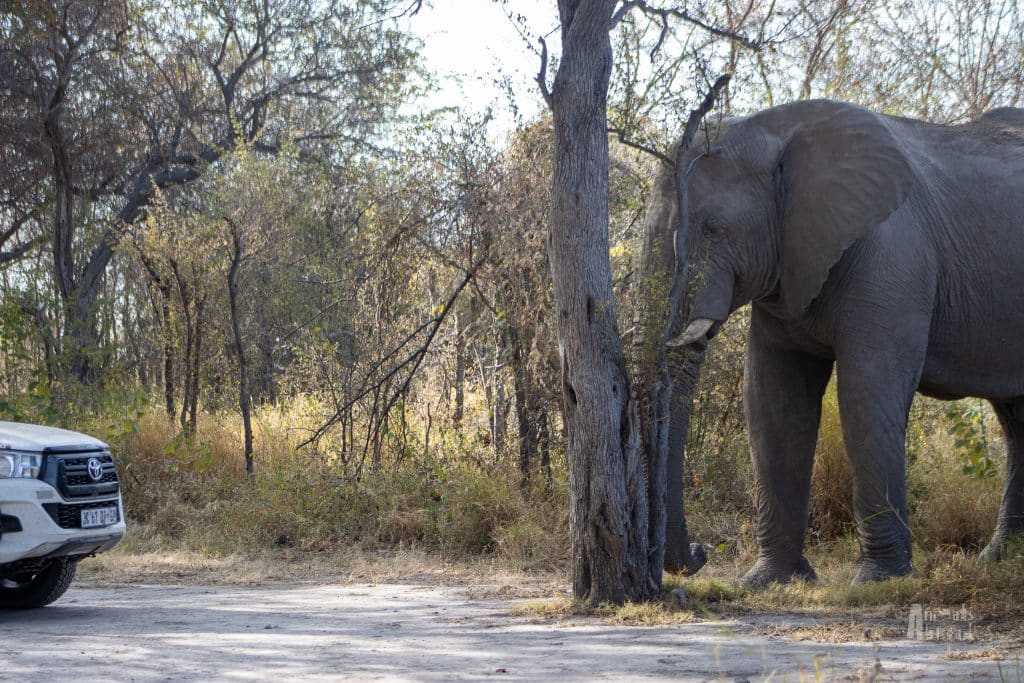
Lights, Camera, Action
Like Etosha National Park, the waterhole came alive at night. We arrived as the sky shifted from golden hues to pinks and purples. Dusk was upon us. A family of giraffes stepped into the pale light, their silhouettes striking against the open plains.
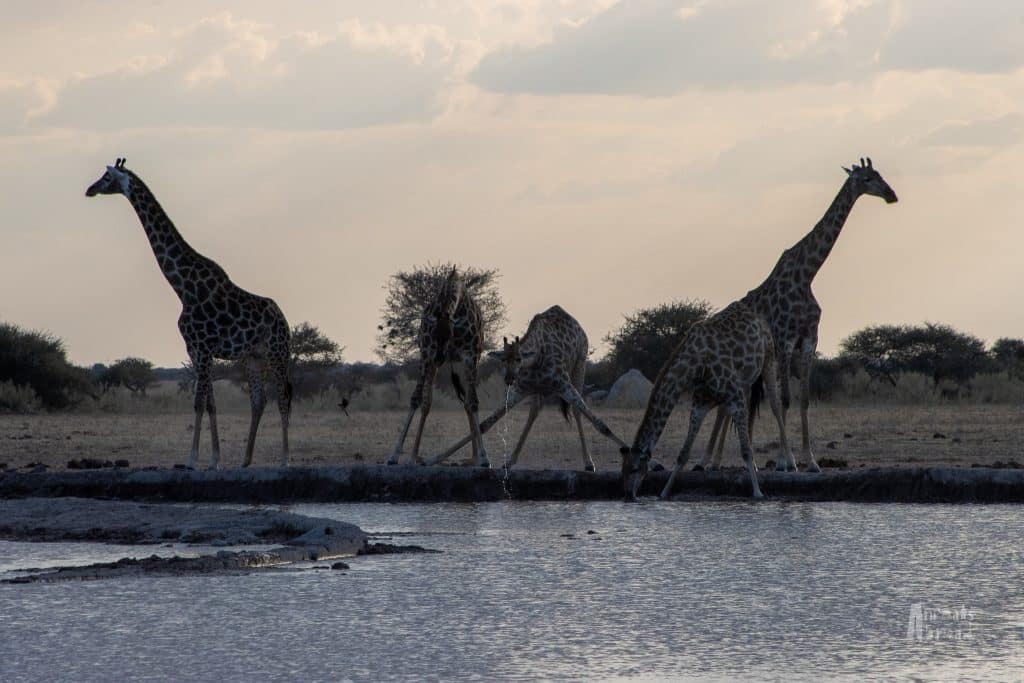
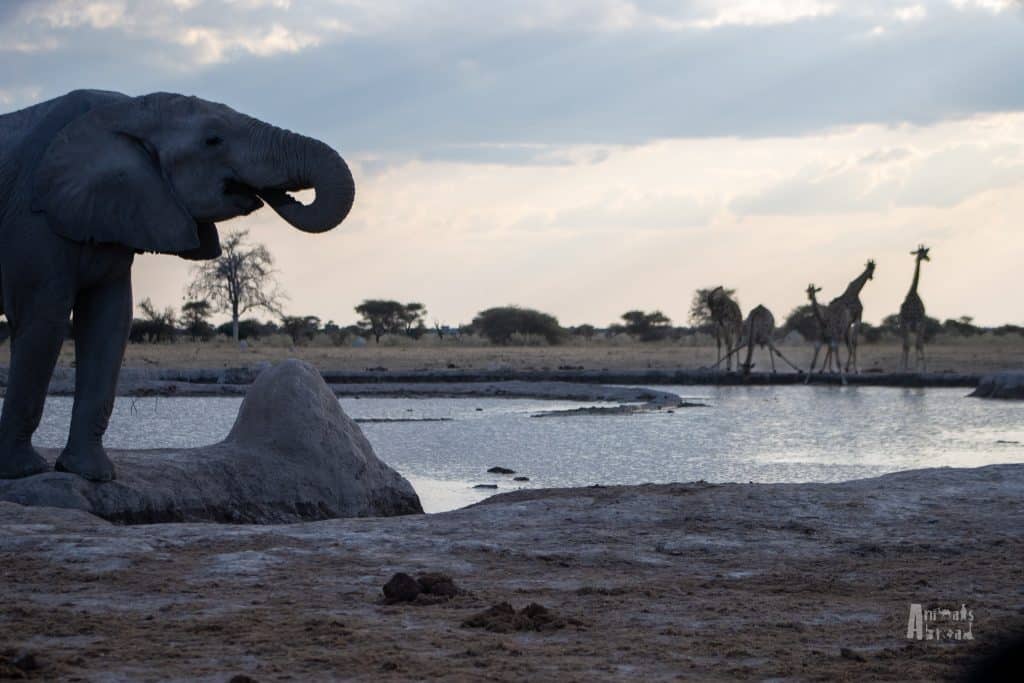
Later, two bull elephants approached each other in a slow-motion standoff. One charged forward, then paused, pacing like a heavyweight boxer before making his next move. Over the course of an hour, the younger bull was pushed back, retreating as the elder claimed victory. It was a powerful display of dominance, patience, and strength.

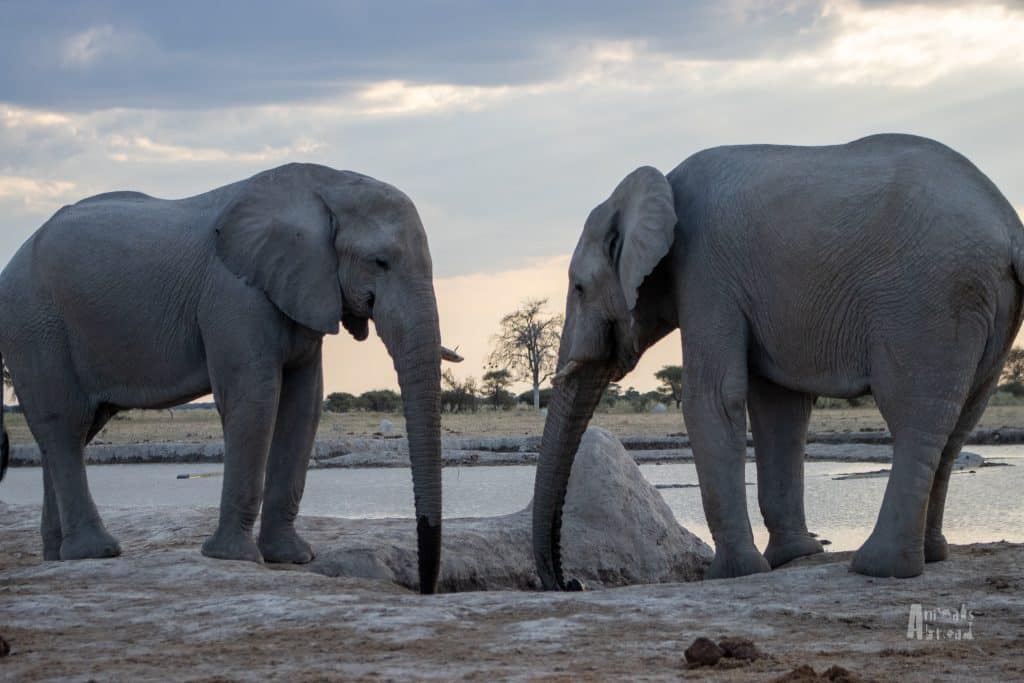
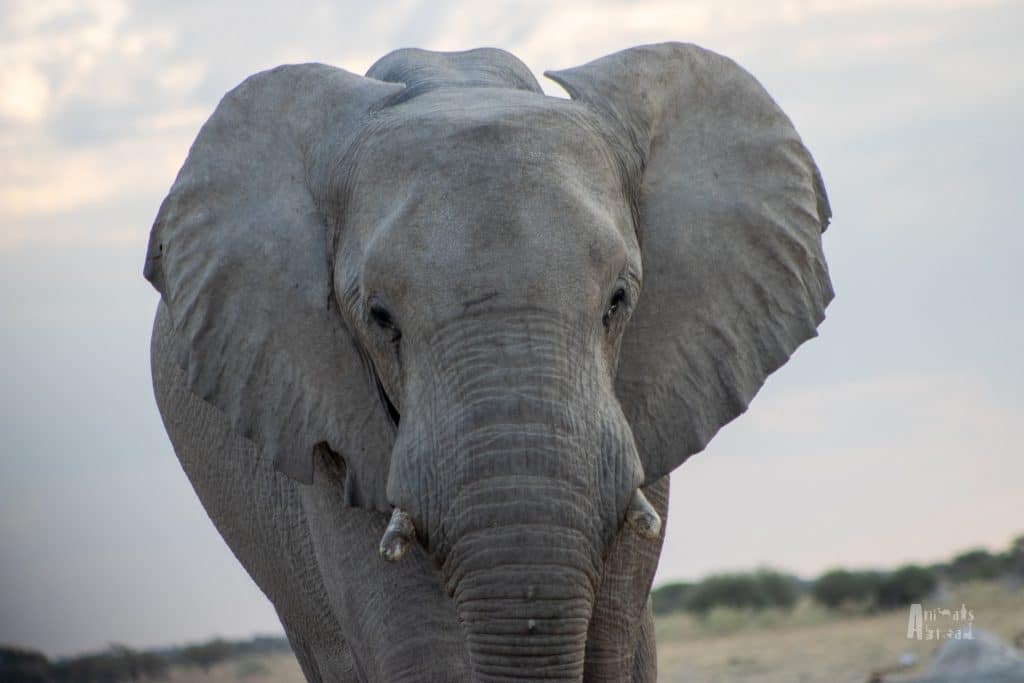
Last Glimpse, Lasting Impression
Nxai Pan left us in quiet awe. From ancient baobabs rising out of the salt to unforgettable wildlife moments at sunset, it’s a place that stirs something deeper—a reminder of just how wild, raw, and beautiful Botswana truly is.
Ready to Start Planning Your Safari Adventure?
Check out these related posts to help plan your trip:
- 51-Day Africa Safari – Part 1: South Africa & Namibia’s Coast
- 51-Day Africa Safari – Part 2: Namibia’s Etosha & Caprivi Strip
- 51-Day Africa Safari – Part 3: Victoria Falls & Botswana
- Our Best and Worst Day on Safari
- Camping Safari in Africa: Know Before You Go
- Camping Across Southern Africa: A Rundown of our Safari Campsites
- Navigating Border Crossings in Southern Africa
- Safari with Kids: Tips from the Road
- Etosha NP with Kids: A Family Safari to Remember
- Exploring the Caprivi Strip with Kids
- Okonjima Family Safari: Where the Wild Things Wait
- The Smoke that Thunders: A Trip to Victoria Falls
- Into the Wild: Chobe NP with Kids
- Sunset Cruise on the Chobe River: A Photo Journey

